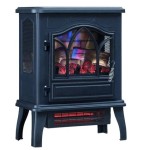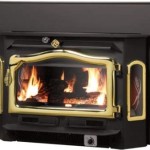How To Clean Black Soot From Fireplace Brick
Fireplaces, a cherished source of warmth and ambiance, often accumulate black soot on their brickwork. This soot, a byproduct of incomplete combustion, can detract from the aesthetic appeal of the fireplace and, if left unattended, can become increasingly difficult to remove. Effectively cleaning soot from fireplace brick requires understanding the nature of the substance, proper preparation, and the application of appropriate cleaning methods.
This article provides a comprehensive guide to removing black soot from fireplace brick, outlining the necessary steps and precautions to achieve a clean and visually appealing result without damaging the brick or endangering oneself.
Understanding Black Soot and Its Impact on Fireplace Brick
Black soot comprises fine particles of carbon resulting from the incomplete burning of organic materials, such as wood. When wood burns incompletely, these particles are released into the air and can adhere to surfaces, including the porous brick of a fireplace. The buildup of soot is influenced by factors such as the type of wood burned (softwoods tend to produce more soot than hardwoods), the efficiency of the fireplace, and the frequency of use. Over time, soot can penetrate the pores of the brick, making it more challenging to remove.
Beyond the aesthetic concerns, excessive soot accumulation can pose certain risks. It can potentially contribute to poor indoor air quality, especially if the fireplace is not properly ventilated. Furthermore, a heavy buildup of creosote, a flammable byproduct of burning wood that often accompanies soot, can increase the risk of chimney fires. Therefore, regular cleaning of fireplace brick is not only about appearance but also about safety and maintenance.
Before commencing any cleaning process, it is crucial to identify the type of brick used in the fireplace. Some brick types are more delicate than others and may require gentler cleaning methods. Applying harsh chemicals or abrasive techniques to susceptible brick can lead to irreversible damage, such as scratching, discoloration, or crumbling. If unsure about the brick type, a discrete test area can be used to assess the impact of the cleaning method before applying it to the entire surface.
Essential Preparations for Cleaning Fireplace Brick
Proper preparation is paramount to a successful soot removal process. This involves gathering necessary materials and equipment, protecting the surrounding areas, and taking appropriate safety precautions.
The required materials and equipment typically include:
*A stiff-bristled brush (preferably made of nylon or another non-metallic material)
*A vacuum cleaner with a hose attachment
*A bucket or container for cleaning solutions
*Cleaning solutions (options detailed below)
*Sponges or cloths
*Protective eyewear
*Gloves
*Drop cloths or plastic sheeting
*A spray bottle (optional, for applying cleaning solutions)
Before starting the cleaning, it is imperative to protect the surrounding area. Lay down drop cloths or plastic sheeting to cover the floor and any nearby furniture. This will safeguard against drips and splatters of soot and cleaning solutions.
Safety is also a critical consideration. Soot can be irritating to the skin and respiratory system. Always wear protective eyewear and gloves to prevent direct contact with soot and cleaning solutions. If using strong cleaning agents, ensure adequate ventilation by opening windows or doors. A dust mask or respirator can be used for added protection against airborne soot particles.
Once the materials are gathered and the area is protected, the initial step is to remove loose soot. Using the stiff-bristled brush, gently scrub the brick surface to dislodge any loose particles. Then, use the vacuum cleaner with the hose attachment to vacuum up the loosened soot. This will significantly reduce the amount of soot that needs to be addressed with cleaning solutions, thus minimizing the risk of staining or damage.
Effective Cleaning Methods for Removing Soot
Several cleaning methods can be employed to remove soot from fireplace brick, ranging from gentle solutions to more potent options. The choice of method depends on the severity of the soot buildup and the type of brick.
1. Mild Soap and Water: For lighter soot buildup, a solution of mild soap and water can be effective. Mix a small amount of dish soap with warm water. Using a sponge or cloth, apply the solution to the brick surface and gently scrub. Rinse thoroughly with clean water and allow the brick to dry completely. This method is generally safe for most brick types and is a good starting point for initial cleaning.
2. Baking Soda Paste: Baking soda is a mild abrasive that can help lift soot from the brick surface. Make a paste by mixing baking soda with water until it reaches a spreadable consistency. Apply the paste to the soot-covered areas and let it sit for about 30 minutes. Then, scrub the paste with a brush or sponge and rinse thoroughly with clean water. Baking soda is a relatively gentle option and is suitable for bricks that are sensitive to harsh chemicals.
3. Trisodium Phosphate (TSP): TSP is a stronger cleaning agent that can effectively remove stubborn soot. However, it should be used with caution, as it can be harsh on certain types of brick and is an irritant. Always wear gloves and eye protection when using TSP, and ensure adequate ventilation. Mix TSP with water according to the manufacturer's instructions. Apply the solution to the brick surface, let it sit for a few minutes, and then scrub with a brush. Rinse thoroughly with clean water. It is advisable to test TSP on a small, inconspicuous area of the brick before applying it to the entire surface to ensure it does not cause any damage or discoloration.
4. Commercial Brick Cleaners: Numerous commercial brick cleaning products are available on the market, specifically formulated for removing soot and other stains. These products often contain a blend of chemicals designed to penetrate and dissolve soot. When using commercial brick cleaners, carefully read and follow the manufacturer's instructions. Always wear appropriate protective gear, and test the product on a small area before applying it to the entire surface. Some commercial cleaners may require specific application techniques or rinsing procedures.
5. Vinegar Solution: A solution of white vinegar and water can also be used to clean soot from fireplace brick. Vinegar is a natural cleaning agent that can help break down soot and grime. Mix equal parts white vinegar and water in a spray bottle or bucket. Apply the solution to the brick surface and let it sit for a few minutes. Then, scrub with a brush or sponge and rinse thoroughly with clean water. The odor of vinegar dissipates quickly, but it is essential to ensure proper ventilation during and after cleaning.
6. Steam Cleaning: Steam cleaning offers a chemical-free approach to removing soot from fireplace brick. A steam cleaner uses pressurized steam to loosen and lift dirt and grime. Direct the steam nozzle at the soot-covered areas and move it slowly back and forth. The steam will penetrate the pores of the brick and help dislodge the soot. Wipe away the loosened soot with a clean cloth. Steam cleaning is a gentle and effective method, particularly suitable for delicate or porous brick types. However, it may require multiple passes to remove heavy soot buildup.
After applying any cleaning solution, it is crucial to scrub the brick thoroughly. Use a stiff-bristled brush to agitate the soot and help the cleaning solution penetrate the brick's surface. Apply firm, even pressure, and work in small sections at a time. Pay particular attention to areas with heavy soot buildup. For textured brick, use the brush to reach into the crevices and remove soot from those areas.
Once the scrubbing is complete, rinse the brick thoroughly with clean water. Use a sponge or cloth to wipe away any remaining cleaning solution and soot residue. Ensure that all traces of the cleaning agent are removed to prevent staining or discoloration. Change the water frequently to avoid spreading the soot back onto the clean areas. After rinsing, allow the brick to air dry completely. Avoid using heat or fans to speed up the drying process, as this can cause the soot to become embedded in the brick.
If, after the initial cleaning, some soot remains, repeat the cleaning process using a stronger cleaning solution or method. Addressing particularly stubborn soot buildup may require multiple applications or a combination of different cleaning techniques. In extreme cases, professional brick cleaning services may be necessary to restore the brick to its original condition.

4 Ways To Clean Soot From Brick Wikihow

How Fo I Remove Fireplace Soot Smoke Hometalk

How To Clean Soot Off Brick Fireplaces Anew

Remove Soot From Fireplace Tips For Cleaning Chimney
White Swan Properties Blo How To Clean Soot From Fireplace Brick

Remove Black Soot From Stone Fireplace Cottage Life

Cleaning Soot Off Fireplace Stone And Brick

How To Clean Fireplace Bricks 9 Steps With S Wikihow

Best Way To Clean A Fireplace Stacy Risenmay

How To Remove Soot From Brick For That Like New Look Home Repair Geek
Related Posts








